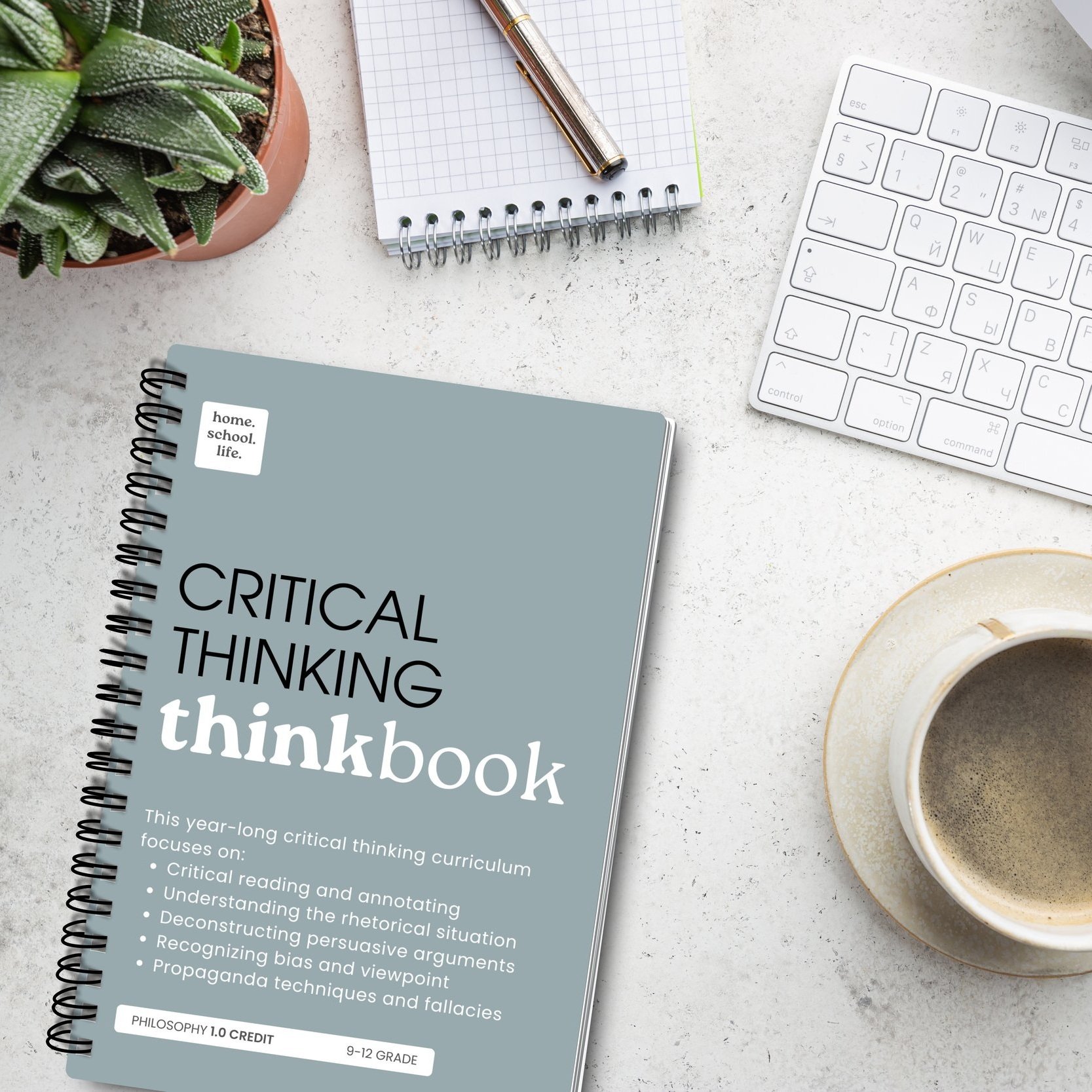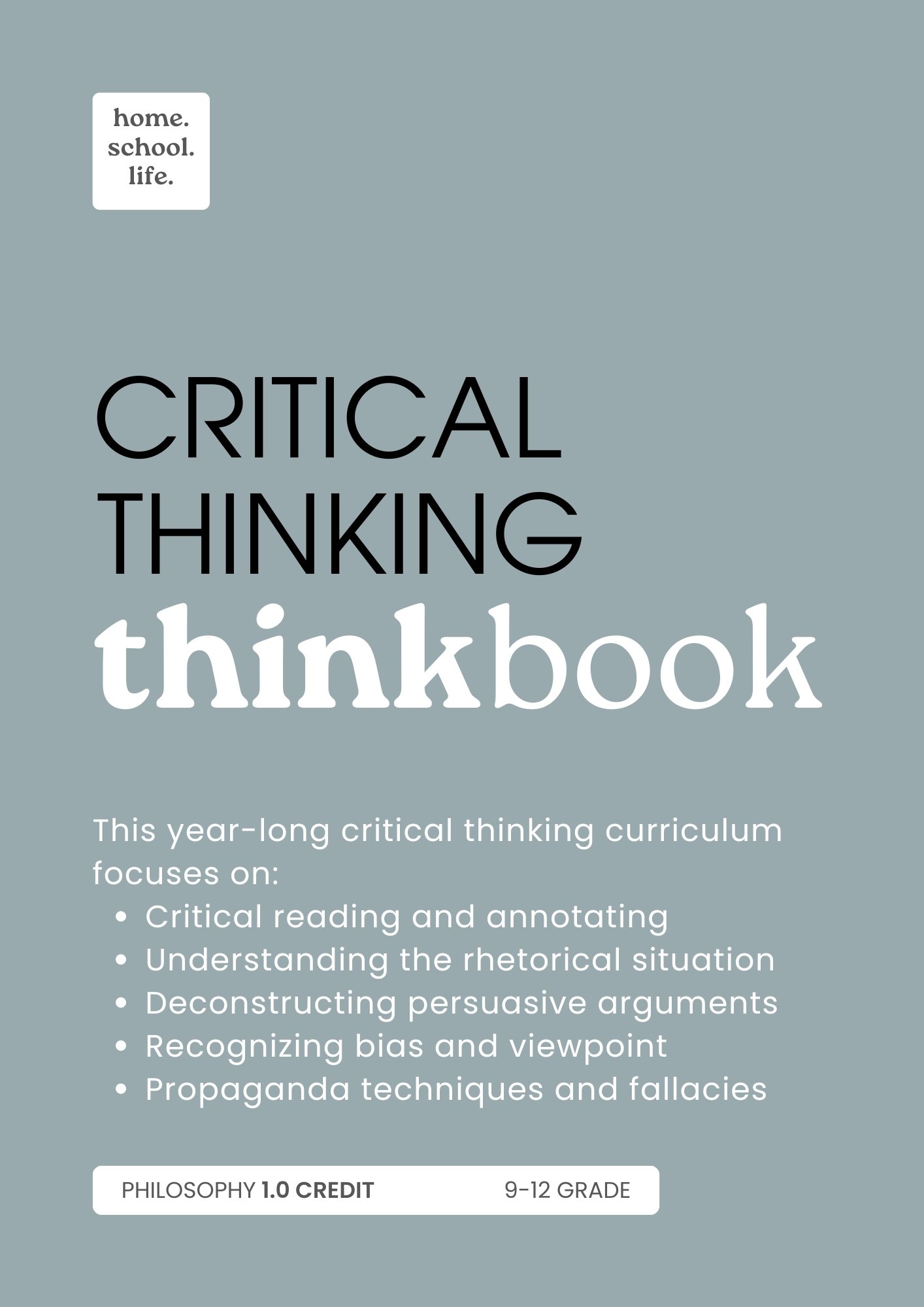 Image 1 of 8
Image 1 of 8

 Image 2 of 8
Image 2 of 8

 Image 3 of 8
Image 3 of 8

 Image 4 of 8
Image 4 of 8

 Image 5 of 8
Image 5 of 8

 Image 6 of 8
Image 6 of 8

 Image 7 of 8
Image 7 of 8

 Image 8 of 8
Image 8 of 8









Critical Thinking THINKbook
This is a digital product. It will be delivered via email as a PDF.
I created this unit to help my high school students learn the basics of critical reading and writing, so it’s focused specifically on tools, concepts, and strategies that help develop those skills. I think it’s best when you can apply it to subjects you’re studying, especially history and literature. This is really designed as a practical course rather than a theoretical one—ideally, students will walk out of this class with all the skills they need to think and read critically.
What's inside this high school critical thinking unit:
15 multi-week lessons designed to help students build critical reading and thinking skills
Detailed explanations and self-guided explorations of critical reading strategies, the rhetorical situation, bias and viewpoint, arguments, and propaganda
Creative projects that let students put their understanding to work
This is a digital product. It will be delivered via email as a PDF.
I created this unit to help my high school students learn the basics of critical reading and writing, so it’s focused specifically on tools, concepts, and strategies that help develop those skills. I think it’s best when you can apply it to subjects you’re studying, especially history and literature. This is really designed as a practical course rather than a theoretical one—ideally, students will walk out of this class with all the skills they need to think and read critically.
What's inside this high school critical thinking unit:
15 multi-week lessons designed to help students build critical reading and thinking skills
Detailed explanations and self-guided explorations of critical reading strategies, the rhetorical situation, bias and viewpoint, arguments, and propaganda
Creative projects that let students put their understanding to work
This is a digital product. It will be delivered via email as a PDF.
I created this unit to help my high school students learn the basics of critical reading and writing, so it’s focused specifically on tools, concepts, and strategies that help develop those skills. I think it’s best when you can apply it to subjects you’re studying, especially history and literature. This is really designed as a practical course rather than a theoretical one—ideally, students will walk out of this class with all the skills they need to think and read critically.
What's inside this high school critical thinking unit:
15 multi-week lessons designed to help students build critical reading and thinking skills
Detailed explanations and self-guided explorations of critical reading strategies, the rhetorical situation, bias and viewpoint, arguments, and propaganda
Creative projects that let students put their understanding to work
This is a high school level unit, designed for students who are ready to explore complex texts from various critical perspectives.
This is designed as a rigorous introduction to critical thinking course for high school students, demanding critical reading and thinking skills that most students won’t be ready to flex this way until late middle school or high school. Ideally, students should have some familiarity with annotated reading, textual analysis, and writing about literature going into this unit.
Like most high school level curricula, it includes information that could be rated M for Mature. History is full of wars and violence. If mature content is a concern for you with your student, I encourage you to pre-read to assess your personal comfort level. (I use this curriculum with my own high school students, but comfort levels can be very personal things.) This is a completely secular program.
The lessons in this Thinkbook are designed to cover one year of high school philosophy/critical thinking (1.0 credit), but you could easily stretch the course over a longer period of time by slowing down and dedicating more research time to projects and major assignments. Some lessons might wrap up in a week; others may take you two or more weeks to complete. My best advice is to find the pace that is comfortable for you and follow that.
Every lesson includes readings, questions to consider about the reading, and work to complete. I encourage you to annotate as you read—future lessons will refer back to previous ones, so annotations will make this much easier!
The major output assignments are designed to be evaluated work, suitable for including in portfolios or assigning grades. Some of these output assignments are short and simple; others require substantial thought and work to complete.

